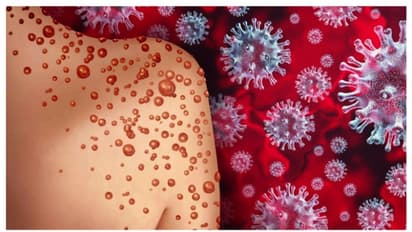Kerala: 38-year-old man under observation for suspected Mpox symptoms in Malappuram

Synopsis
A Malappuram man is under observation at Manjeri Medical College after showing possible Mpox symptoms, including fever and skin bumps. He had returned from Dubai a week ago, and his samples have been sent to Kozhikode Medical College for further testing, with results pending.
Malappuram: A 38-year-old man from Edavanna, Malappuram, is under observation at Manjeri Medical College Hospital after exhibiting symptoms of Mpox. The man had returned from Dubai a week prior and sought treatment for a high fever at the hospital's casualty department. Doctors observed bumps on his body, raising concerns of a potential Mpox infection. His samples have been sent to Kozhikode Medical College for testing, and the results are awaited.
He sought treatment yesterday morning at the dermatology department's outpatient clinic, complaining of fever and noticing bumps on his skin similar to chickenpox. As a precaution, authorities have placed him under observation, suspecting a possible Mpox infection. They have reassured the public that there is no need for concern at this time, and they are awaiting test results.
What is Mpox?
Mpox, formerly called monkeypox, is a viral zoonotic disease caused by the mpox virus. According to the World Health Organization (WHO), it is primarily found in tropical rainforest regions of Central and West Africa but can occasionally appear in other parts of the world. The name was changed from "monkeypox" to "mpox" to prevent stigma and avoid misleading associations.
Why is Nipah virus recurring in Kerala?
Symptoms of Mpox include fever, rash, and swollen lymph nodes, which can sometimes lead to medical complications. The rash typically begins on the face and then spreads to other parts of the body.
The virus can be transmitted from animals to humans through direct contact with the blood, bodily fluids, or skin lesions of infected animals. It can also spread between humans via respiratory droplets, direct contact with infected fluids or lesions, and indirectly through contaminated objects.
Stay updated with the Breaking News Today and Latest News from across India and around the world. Get real-time updates, in-depth analysis, and comprehensive coverage of India News, World News, Indian Defence News, Kerala News, and Karnataka News. From politics to current affairs, follow every major story as it unfolds. Download the Asianet News Official App to stay informed anytime, anywhere.